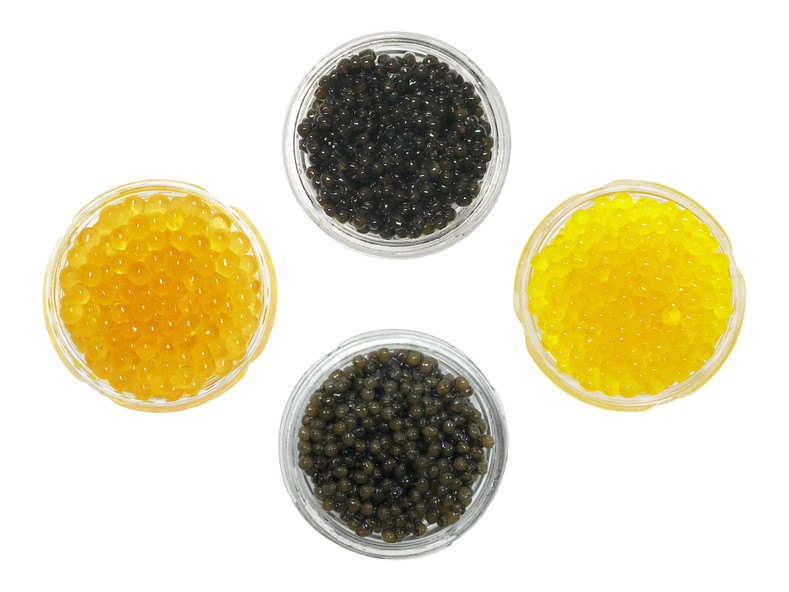How to Celebrate National Caviar Day the Right Way

National Caviar Day
Mark your calendars! July 18 is a day of recognition for the renowned seafood delicacy that is caviar. It’s National Caviar Day!
Anyone can take part in this wonderful occasion. Just simply enjoy some caviar and post on social media using #NationalCaviarDay.
Caviar is the salted fish eggs solely from species of fish classified as Sturgeon. There are several different species of sturgeon famous for their eggs and each sturgeon produces it's own unique color and taste profiles. Roe from other fish are not "true" caviar, but can still be celebrated on Wednesday the 18th just the same.
There is no clear origin for this relatively new USA holiday. Being a day after the end of "Amazon prime day" it seems likely that National Caviar Day was popularized by the food companies selling the products, similarly to National Pizza Day, National Potato Chip Day and National Candy Day. Whoever the person/company responsible for creating this marvelous day is, we would like you to know that the world of caviar is forever grateful!
How to Enjoy Caviar
High quality caviar should be firm and have an slight snappiness when eating the delicacy, rather than coming off as a mushy paste across the palate. When you first open your tin or jar of caviar, each egg should glisten and stand out from one another as if they appear to be little pearls. Quality caviar should never be mushy, oily or murky.
When serving the caviar, don't use silver or other metallic utensils as the metal will diminish the flavor of the caviar you wish to enjoy. It's recommended that you always use plastic or bone utensils over metal, but true connoisseurs stay traditional and only use utensils made from shell or mother of pearl.
Once you have taken in your first serving of caviar, spread the roe across your tongue while gently rolling them against the roof of your mouth. As you are gently rolling the eggs across your palate, make sure to breathe in through your nose to get the full aroma.
Next is where the piece de resistance, the primary flavor of caviar, makes its debut. Once you have given the aroma time to set in, begin to slowly crush the eggs. You may feel a soft pop against your palate and the eggs become creamy and melt in your mouth. Caviar has tastes that range from buttery, rich and nutty to salty, earthy, and fishy. Make a game out of it and try to identify as many flavors as you can!
Caviar Types & Pairings
It is worth mentioning that the grade of the roe along with other various conditions can affect the appearance, smell and flavor of the caviar. For example, Royal and Imperial grade caviar will usually look and taste better than Classic grade or anything lower. Different environments and temperatures can affect the flavor of wild caught or outdoor farmed caviar, but the flavor is affected more by the water quality and the feed used in raising the fish.
Unless you take your caviar only with a spoon, some food accompaniments work better than others depending on the type of caviar you're eating. With the lighter, high-end caviars, you should never add too much other flavors in the mix. In most cases, serving with blinis with creme fraiche or toast with butter is all you should add to milder caviar. Stronger flavored and sometimes more affordable caviar can be served with small portions of green onion or chicken egg and not have their taste be totally overpowered. When it comes to drinks, most champagnes and/or vodkas pair excellently with any caviar. The stronger caviars, and even smoked fish roes have been said to go great with stronger beers, scotches and whiskeys.
Here are some general flavor profiles of certain types of caviar listed from the most mild, creamy and buttery to the most strong, briny and earthy:
Beluga | The Beluga/Siberian Hybrid caviar is creamy, mild and well-balanced. Light nutty flavor of true Beluga caviar with subtle nutty and briny taste of Siberian caviar.
Kaluga | An incredible delicate and buttery flavor and sweet briny finish. This Kaluga Hybrid has generously sized grains with a chocolate brown to dark amber color.
Osetra | Royal or Imperial grade, bright amber Osetra caviar is a quite an exceptional treat. Russian Sturgeon roe is known for its wonderful clean and nutty flavor, sometimes described as "fruity like extra virgin olive oil".
White Sturgeon | White Sturgeon Caviar has beautiful color, ranging from deep amber to dark gold, and wonderfully creamy beluga-like taste with stronger notes of the sea.
Siberian | Chocolate brown to dark colored Siberian caviar exudes an elegant briny yet smooth flavor.
Sevruga | Sevruga caviar has a pronounced "caviar" taste. With a dark, steel-grey color and small-to-medium pearls, this is a very traditional and delicious caviar.
Hackleback | This caviar is small and firm with all the characteristics and tastes of the classic wild sturgeon. The roe is dark and firm with a very mild, subtle flavor. Hackleback is the last true American wild caviar.
Paddlefish | Ranges in color from light green to dark steel gray, and is comparable to Caspian Sea Sevruga in flavor.
Sources: National Day Calendar | Posh Pescatarian



 (888) 268-8780
(888) 268-8780
